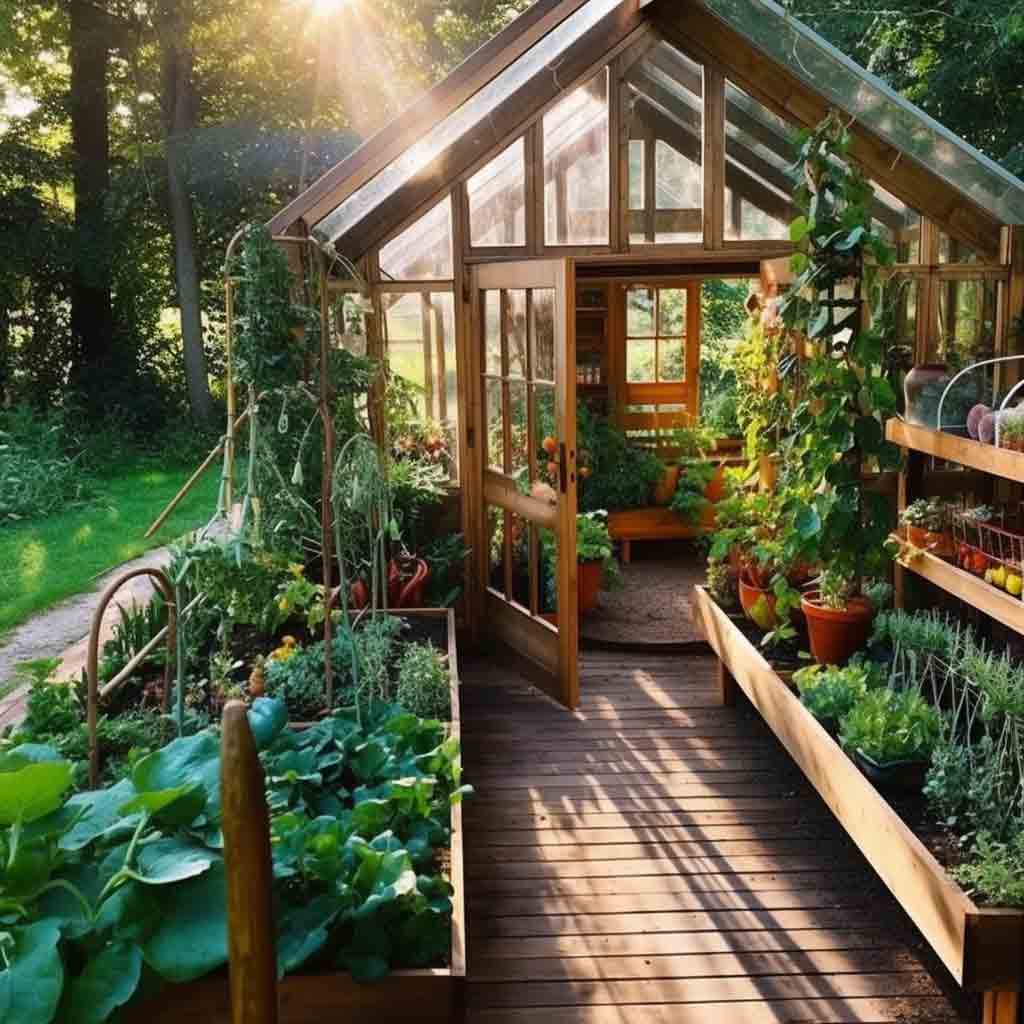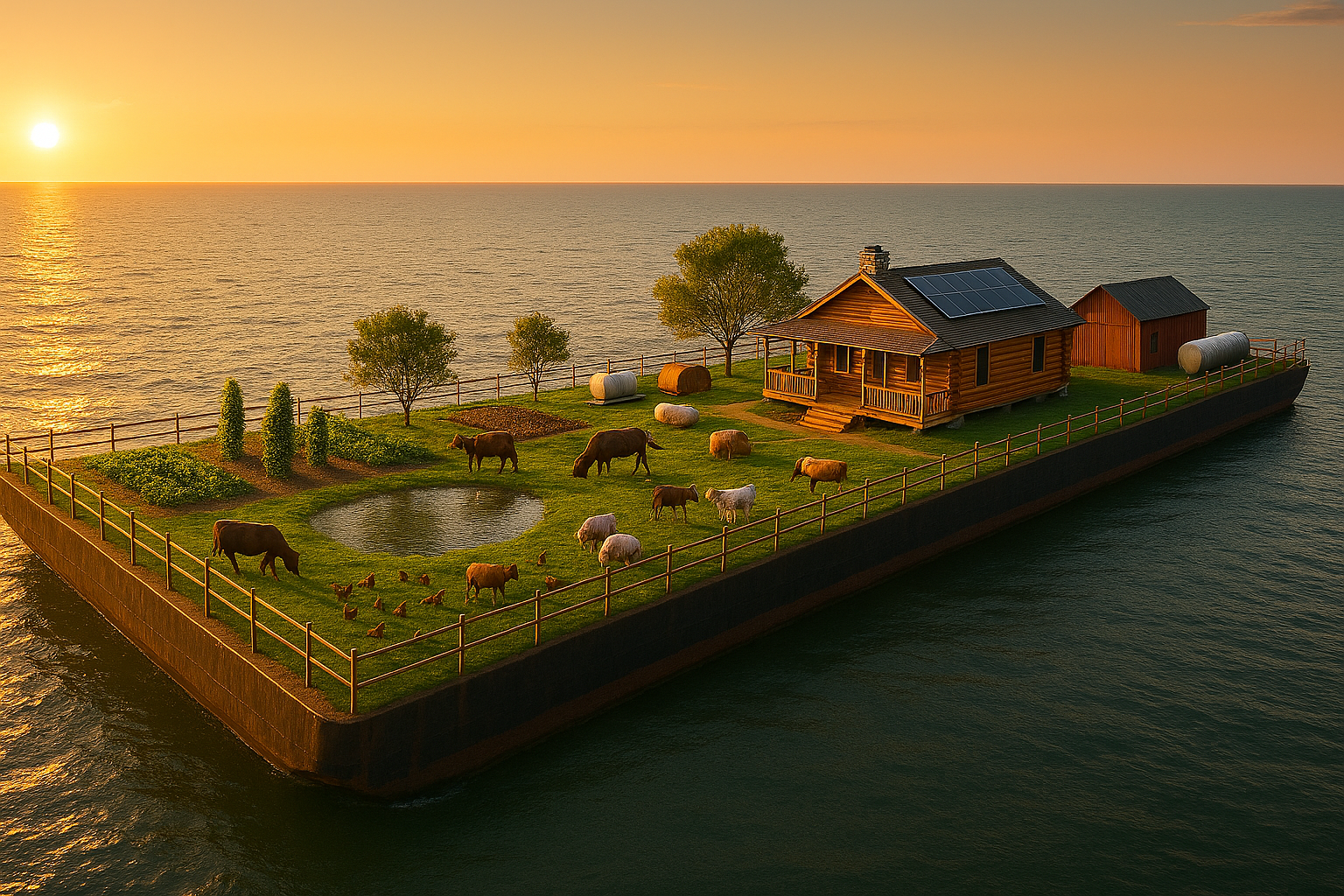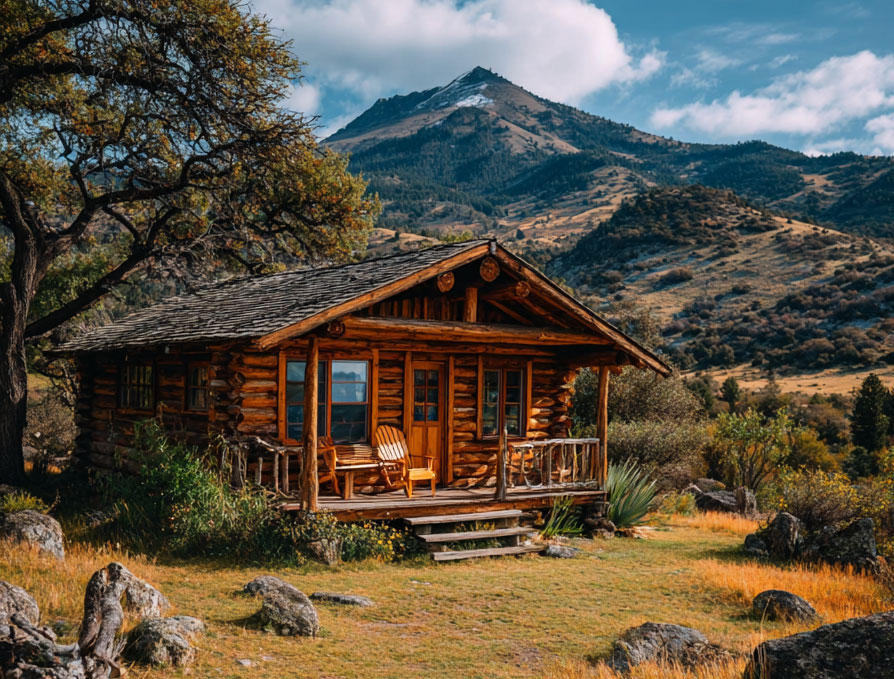Yes! You can grow food year-round, anywhere in the world. Regardless of weather. Including extreme climate zones with extreme cold and extreme heat in arid deserts. Some folks will scoff at the idea of growing food year-round, and they think it’s impossible. They believe that you can’t do it. That the cost of “fuel” and heating” and, blah blah blah…INSERT EXCUSE HERE.
I’ve heard it all. And all the naysayers are straight up WRONG! Sorry. But if you’re one of them, you’re wrong, and this article will show you how it’s not only possible, you can do it a lot easier, cheaper, and with less technology than you think. Get ready. Here comes a brain bomb of information so simple you’ll say to yourself that’s so simple, why didn’t I think of that.
AUTHORS NOTE: Oh, and by the way, I wanted to let all the naysayers know that the techniques I quote here in this article and use as examples are proven to work in real-world scenarios. This is NOT all new tech, some of it is a new spin on old tech. It’s a very simple idea and one I’m sure most of you will kick yourself for not thinking of this before.
DISCLAIMER AND WARNING: The methods presented here require hard work and pose some risks of fire and dangers of overheating, ventilation, and require proper knowledge of plumbing and heating and cooling and other construction techniques; so where possible hire professionals to do work you are unqualified to do; be careful, don’t break the law, and wear proper safety gear, PPE, and safety equipment at all times. Further Disclaimer: DO NOT USE THESE METHODS AT ALL! IF YOU DO, YOU ASSUME ALL RISK AND RESPONSIBILITY FOR YOUR ACTIONS!
WARNING: DON’T TRY THIS AT HOME!
Ok…now with all that legal stuff out of the way, let’s get into it.
THE SCIENCE OF ENERGY
So let’s get into the science a little bit. The science and physics of growing plants. Not just veggies and fruits, but heat and thermal mass, and energy and thermodynamics. Yes. I’m going to talk about physics a little, and though I’m no physicist, I know enough about physics and how thermodynamics works, how energy works, to build a system that can grow food year round, regardless of the climate.
As you can probably guess it will be indoors. There will be two main types of structures we will be discussing in this article.
A typical greenhouse with a dirt floor, and a shipping container which will provide a closed (yet well ventilated) grow space for an indoor high-tech grow system.
Now into the physics of energy and heat.
What can you think of that would be on a farm or homestead that generates heat? Your woodstove maybe? Solar panels? Your electric range/oven? Your electric or propane powered water heater? A propane powered greenhouse/outdoor heater?
None of the above will be used (except for solar power).
COMPOST HEATING
Compost produces enough heat to cause fire. It will ignite in proper conditions. Temperatures inside the center of a compost heap can get as high as 160 degrees F, according to most articles about it, but it can get much much hotter. Hot enough to ignite the compost heap on fire. But we don’t need it that hot nor do we want it that hot.
PRO TIP: Yes, you can put a piezo electric generator in a compost heap and generate electricity; ok technically you can’t “generate” electricity. That’s impossible according to the laws of thermodynamics, but you can CONVERT energy from one form to another. This is what a gasoline generator does by burning carbon based fuels to produce “work”, torque, within the engine, and that torque turns an electric motor, which in turn converts the energy from burning the fossil fuel into electricity, which is just another form of energy.
Heat is another form of energy. It’s what coal power plants use to generate electrical energy.
And there is plenty of heat inside a large compost pile. Enough to heat your water for bathing and washing dishes and clothes. There are people who have built and use composting water heaters. Look it up. It’s a thing.
Here’s a photo of a compost water heater.
The idea is simple. wind/coil a pipe inside the compost heap. As the compost decomposes it creates heat, this heat, combined with a solar power electric pump, can pump heated water through the pipes into your home to provide hot water.
You can use this same technology (which is a very simple concept) to heat your greenhouse too, but you have to build this into the design of the greenhouse itself. Namely you must build this heating pipe system into the floor of the greenhouse.
The idea is simple.
Build a giant compost heap. You’re going to have one on your homestead anyway, you might as well build a big one and use the excess heat generated from it to heat your greenhouse.
The compost pile should be about 6 feet in height and about 50 feet long (about the length of your greenhouse).
Your greenhouse can be about 30 feet wide by 50 feet long with an 8 to 10 feet ceiling, giving you a 1500 square foot greenhouse!
Is that too big? Not really when you’re going to be growing food year round. You need the space. Think about it. If you live in the northern hemisphere your winters can be downright brutally, bitterly cold, and the windchill makes it even colder. You’re going to want to have a large enough heated space to grow enough food year round to be completely 100% self-sufficient and not have to rely on going into town to pick up food or get into your root cellar and hit your stash of canned and preserved foods, fruits and veggies.
If you want fresh fruit and veggies year-round, you need to be able to grow fresh fruits and veggies year round. That requires climate control.
CLIMATE CONTROLLED GREENHOUSE
Using the heat from the compost heap you can heat your greenhouse.
The only equipment and materials you need are:
- Solar Power & With Battery Backup – to power the water pump. This is provided by your solar power system on your property.
- Metal pipe (metal is a good conductor of heat, and acts as thermal mass to hold the heat longer than plastic pipe. Do not use plastic pip as plastic is an INSULATOR not a conductor. You want the thermal mass of the metal pipe instead. – A lot of it. This is to be installed within the compost heap, and running underground about a foot deep, below the greenhouse floor.
- Bobcat, Backhoe or Shovels & Lots of Work – You’ll have to dig out the entire footprint of the greenhouse to install the piping.
- Gravel & Sand/Dirt – Gravel and sand acts as thermal mass. The rock holds the heat longer.
- Wind Turbine – For power when the wind is blowing and the sun is not shining. This power is NOT for direct use. It’s only used to charge the battery system, from which you will draw power.
- That’s it
SAFETY TIP: Hire a professional electrician familiar with solar installation to set up and install your solar power system for you if you’re not familiar or your knowledge isn’t up to the task. Always use a professional with jobs like this where possible.
Install the piping a foot or two off the ground where the compost heap will be, and once installed, then dump the compost on top of the piping.
Connect the pipe to the grid of pipe installed about 6” to 12” below the surface of your greenhouse floor.
The pipe should be in a grid or “S” configuration under the floor of your greenhouse. About 12” to 18” on center between pipes. This grid system should cover the entire 1500 square footage under the greenhouse.
If you’ve ever seen a heated floor installation in a modern home, just picture that kind of configuration. You’ll simply be pumping warm/hot water through the pipe to heat the floor.
Heat rises, so it will get hot in the upper part of the greenhouse, and you also want to have a ventilation system built into the top of the greenhouse to regulate the airflow and temperature.
RECYCLED WATER HEATER METHOD
You don’t need to use compost to heat your greenhouse if you don’t want to. Using the same piping grid formation, you could simply use a common water heater.
PRO TIP: Do not use a propane water heater or stove or heater! Look I get it, propane is EASY. It’s relatively cheap. But it’s NOT sustainable and if you’re looking to be self reliant and 100% self sufficient propane is NOT going to be the answer to your heating needs. It’s just not. Unless you know how to make propane, then you’re not going to be able to maintain that heat in the event you cannot buy propane. Also, propane is an ongoing cost. Meaning to run a propane heater/water heater all winter is going to cost you a lot of money that you could have simply spent on a passive thermal mass heating system with compost or a recycled electric water heater which uses solar and wind power! Think smart! Think long term. Think about self sufficiency and sustainability. Propane is NOT self sufficiency. It’s a dependence and an expense you do not need and should not want.
Buy yourself a used water heater, or use your old one if it’s safe. Have it inspected by a professional to make sure it’s safe. Water heaters get very hot and have massive pressure build up inside the water tank and it could explode. Not trying to scare you, but if it’s not safe you don’t want it on your homestead.
Use the solar power you generate to power the water heater which will heat your greenhouse. You’ll need to buy a few extra solar panels and batteries to make up for the size of the space you’ll be heating, but you can do it, it is possible.
SHIPPING CONTAINER GREENHOUSE – GOING HIGH TECH
A shipping container doesn’t sound like a “greenhouse”, but it can be a completely self-contained growing system, only you’re controlling the climate more directly and you will also be controlling the humidity, nutrients, and the lighting using LED UV grow lighting power by your solar system.
A 40’ HQ shipping container is 40’ long and 8 feet wide and 8.5 feet tall. This will give you a 320 square feet footprint.
GO VERTICAL
You can install growing shelves 4 of them minimum. 3 feet wide each along the full length of the walls, leaving a 24” (2 foot wide) walkway down the center of the shipping container.
This gives you 120 square feet per grow shelf x4 per side is 480 square feet, x 2 sides equals 960 total square feet of grow space. In one shipping container!
PRICES OF SHIPPING CONTAINERS: Shipping containers cost around $3500-$5000 depending on where you get them and how many you buy. Use your due diligence, research the company you’re buying from. Go see the container in person before you buy it. Ask about chemicals and other things that may have been inside it. Do your homework.
BONUS: If you really wanted to you could install a small cattle tank or above ground swimming pool beside the shipping container regulating the water temperature with your solar powered water heating system, and raise fish for food. Meaning you could turn your shipping container or greenhouse into an aquaponics farm.
Every growing/heating technique I’ve listed here has been done before and is proven to work even in the harshest of environments. All I’m doing is combining these technologies in a new way.
Costs vary, but you can build a greenhouse for a few hundred dollars, factor in the materials and water, pipe, extra solar panels, and batteries, and for about $3000-$5000 you can have a greenhouse system that will allow you to grow your own food year round.
I think it’s a small price to pay for the ability to grow food year round. Not many people do unless they live in a climate that allows it.
So there it is. I hope this gave you some good ideas. Be careful. Use proper safety precautions and equipment, hire professionals when needed.
You can grow food year-round, no matter how cold it gets outside.
***





